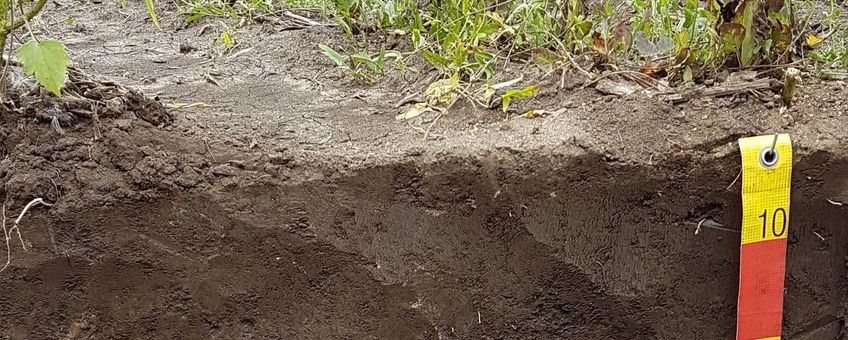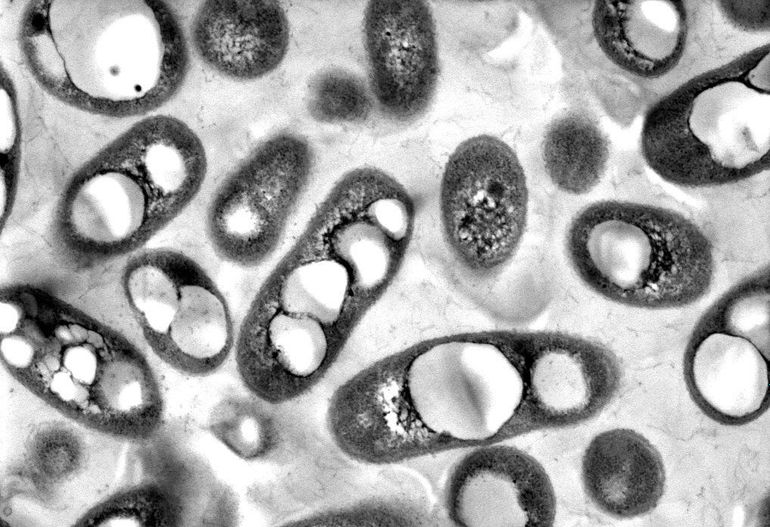
Beneath your feet, soil microbes are getting fat
Netherlands Institute of Ecology (NIOO-KNAW)We live in a microbial world, with single-celled organisms occurring everywhere, and especially in the soil under our feet. There are billions of them in a teaspoon of soil, so despite their small individual size they have a lot of influence. Microbes break down plant-derived organic matter and release plant nutrients, and themselves form the basis of complex food chains. In the process, they generate a great deal of greenhouse gases like CO2, but they also form long-lasting soil organic matter that can help to reduce climate change.
Some things about of their small-scale lifestyles are hard to imagine from our perspective, but other aspects are quite comparable to animals, including us humans: they consume resources to grow, they release waste products, they reproduce, and eventually they die. And in the course of their lives – as our recent research has shown – they also get fat.
Starving microbes?
Microbiologists have long known that some bacteria and fungi growing in the laboratory can build up internal stores of resources like carbon and energy, which serve similar purposes to fat in humans. These storage compounds include some of the same materials our bodies also store (like triacylglycerides – TAG – that make up animal fat), as well as more exotic substances that only some microbes can produce.
However, given the harsh realities of living in the wild, we might expect microbes in soil to have no spare resources and therefore to be scrawny. It has also been widely assumed that competition for survival would force wild microbes to reproduce as fast as possible, rather than investing resources for other purposes.
To see if this was true, we measured the levels of microbial storage compounds in a German agricultural soil. Instead of starving microbes, we found high levels of storage (around 10 percent of the total microbial mass). This included a large contribution from the bacterial storage compound polyhydroxybutyrate (PHB), a substance that is already under investigation as a possible replacement for non-renewable plastics. It seems that this storage compound is not just of technological interest, but also plays an ecological role in soils.

Junk food
We also wanted to know what happens when microbes have a lot of available resources, since this situation does occasionally happen in soil. For example, when the tip of a plant root grows into a new area, it releases sugars like glucose into the surrounding soil. When provided with easily available 'junk food' like glucose, microorganisms are normally expected to increase in number. When we added glucose to our soil, we did see increased numbers of microbes, but they also greatly increased the amount of storage. Essentially, they got fat. In fact, they got so fat that in some cases more of the glucose carbon went into storage compounds than into new microbial cells. This proves that storage can be an important but so-far neglected part of the soil carbon cycle.
Saving for a rainy day
In retrospect, investment in storage makes a lot of sense for a soil microbe. Because soil is a difficult environment with unreliable resources, a microbe can never be sure where the next meal is coming from. Maximum reproduction in times of plenty could risk mass starvation when scarcity returns. And even when resources are scarce, it makes sense to put something aside for the future.
The capacity for this sort of strategic investment suggests much more sophisticated resource use by soil microbes than previously thought. We expect these strategic stores to help soil microbes surviving environmental stresses and extreme events, which are becoming more frequent as global change bites. These survival mechanisms will likely be crucial for them to keep doing their globally important work.
More information
-
The scientific article: Intracellular carbon storage by microorganisms is an overlooked pathway of biomass growth, published in Nature Communications in April 2023. It is written by Kyle Mason-Jones (NIOO-KNAW), Michaela A. Dippold (Geo-Biosphere Interactions, Department of Geosciences, University of Tübingen, Tübingen, Germany) and others.
Text: Kyle Mason-Jones & Michaela A. Dippold / NIOO-KNAW
Photographs: Kyle Mason-Jones; Dr. Martin Koller, University of Graz, Austria (preparation and transmission of STEM pictures by Elisabeth Ingolić, FELMI-ZFE Graz.)
